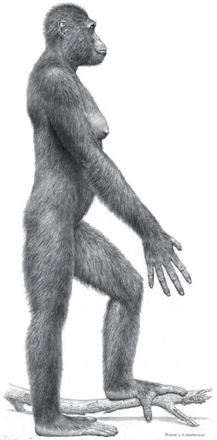Individuals engaged in manual work, especially those who rely heavily on thumb positioning—such as violinists, who support their fingers on the instrument’s neck, or manual therapists, who manipulate soft tissue—frequently experience issues at the point where the thumb meets the hand. This condition can technically be identified as a sprain of the Palmar Carpometacarpal ligament, wherein the 1st Metacarpal is levered laterally outward from its articulation with the Trapezium Carpal bone. Consequently, the thumb struggles to distribute load through the joint into the wrist efficiently.
When the thumb grasps, there is an outward force of the 1st. Metacarpal at the Trapezium Carpal end and this is prevented from projecting outward by an insufficiency of ligaments. It can be speculated that evolving a foreleg paw into a hand with an opposing thumb challenges the transformative potential of our connective tissues. Where this limitation materializes is within this joint.
In many manual professions, this can be a career-ending injury. If you notice pain in the joint illustrated in the picture, preventative action is highly recommended.
MAINTENANCE RECOMMENDATIONS
As I have some experience with this issue, I thought to post some of the tactics I use to maintain and regenerate this joint:
Collagen:
I highly recommend supplementing daily with Collagen Peptides 1 & 3. This puts the raw materials into the connective tissue matrix needed for regeneration. It is important to also supplement with Vitamin C when supplementing with Collagen.
There is a collection of posts here discussing the structure and function of connective tissues:
TENSEGRITY AND CONNECTIVE TISSUES
Near Infrared Therapy:
I recommend daily use of Near Infrared Therapy (NIR) to reduce inflammation and increase the rate of healing. I have a post on this here:
NEAR-INFRARED THERAPY
I have other posts on managing inflammation through diet, etc. here:
ASSIMILATION AND METABOLISM
Hand Exercising Ball:
I am not a big fan of the squishy exercise balls. They assist in strengthening the muscles, but with this type of injury, it is better to activate the tendons with minimal movement of the joint, allowing for Fibroblast reconstruction of the matrix. The angle of this activation is specific to the orientation of the 1st Metacarpal seated in the trapezoid carpal joint, making this relatively large.
There is not a “one size fits all” option here.
I fabricated a minimally squishy ball for this purpose. After several iterations, I found a shape that seemed to assist in aligning the thumb optimally. There is a hole to glue a loop of cord into so that you can hang it from your wrist while doing other things.
In using it, don’t squeeze but rather grasp firmly and hold (up to 1 hour – think of this as an inverted cast). You can marginally change the pressure of the grip, but the concept is to put the joint under a stable load, informing the connective tissues to knit together within these parameters. It is harder for this to happen if the joint is going through its range of motion or is not under some load.
If you print one of these, you should scale it to your body height – I am 74″ (1880mm) so you would use this formula: Scaling Factor(X) = your height in inches/74 * 100
STL of the Tool for 3-D Printing:
These can be ordered from any of the many 3-D PRINTING COMPANIES
ThumbBall
Scale: 100% = 74″
Scale to your height when ordering.
Material: TPU
Infill: 20%, Wall, etc: 1.6mm
by providing the STL file in the above link.
Kinesio Tape:
K taping is very helpful with ligament healing, stabilizing the joint while allowing for movement. As a bodyworker, I need to secure the tape as it will pull off as I use the hand so I use Superglue on the stitch (just a dab). I usually only tape when working as I think allowing the joint to heal unrestricted is better.
BraceLab Metagrip:
Stabilize your thumb CMC joint with the Push MetaGrip so you can perform pinching and gripping motions with ease. By squeezing the brace’s embedded, contoured metal form you create a custom fit. The brace can be worn under a glove, resists abrasion, and does not impede the movement of other joints. Latex-free, waterproof, and able to withstand heat, the brace is durable enough to be machine-washed on the gentle cycle and can be worn during a wide variety of activities.
BRACELAB METAGRIP
ARDIPITHICUS RAMIDUS
A primate antecedent of ours that also experimented with an opposing thumb is Ardipithicus Ramidus but with the foot. Given the geometries involved in the Grasp mechanism, I expect that Ardi dealt with some of the same issues that we experience with our opposing thumbs, but in his/her feet.
(1st. Metatarsal/Cuniform Metatarsal dislocation)
The foundational issue is the transformation of a mechanism that evolved to resist compressional forces (weight bearing) into a mechanism for resisting tensional forces (hanging). The kinematics require a foundationally different set of design constraints.
Our opposing thumbs have been an astoundingly successful adaptation, but additional attention and maintenance may find utility, especially for those of us involved in manual work, and as we age.




